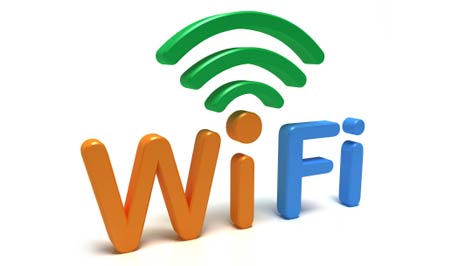A sign of the evolution of a category is small advances that create efficiencies and simply help things go more smoothly. One such step is the use of a portion of an access point’s (AP) capacity for users not related or even known to the owner.
This seems to be a good idea. As everyone knows, and as Walt Mossberg points out in a re/code piece, folks have access to multiple Wi-Fi networks as they traverse even a moderately dense environment. It seems wasteful to not more cleverly access that overlapping coverage.
There even is a consortium pushing the open wireless idea. This is from the group’s website:
The Open Wireless Movement is a coalition of Internet freedom advocates, companies, organizations, and technologists working to develop new wireless technologies and to inspire a movement of Internet openness. We are aiming to build technologies that would make it easy for Internet subscribers to portion off their wireless networks for guests and the public while maintaining security, protecting privacy, and preserving quality of access.
The concept may make sense, but it is not succeeding domestically. PCWorld reports that Fon, a Spanish company that promotes AP sharing, “has largely failed to build a presence in the U.S. beyond a project in Brooklyn and a roaming deal with AT&T,” according to reporter Mikael Ricknäs.
The technical, business and/or cultural challenges apparently aren’t so great elsewhere. The company has about 15.6 million hotspots and recently made deals with Vodafone in Spain and Italy. A partnership with Telstra in Australia was slated to go live in late June and it is expanding in Japan via a deal with SoftBank, the story reports. The company still hopes to pass 25 million homes in the U.S. in two years.
Comcast is also interested in AP sharing. Things are not going so well, however, and the way in which Comcast is going about it threatens to give the concept a bad name. The story says that the company had plans, as of the end of 2014, to use 8 million of its newer residential APs connected to its Xfinity WiFi Hotspot network to run public networks.
However, a class-action suit was filed in the U.S. District Court in San Francisco against the company late last year. The plaintiffs claim that though the subscribers have the right to opt out of participating in the secondary public network, it is turned on without their permission and that the contract between them and Comcast inadequately addresses the issue, if at all. The company is in essence stealing electricity from subscribers, whose homes power the networked APs, the suit says. There seems to be no update on the suit, which suggests that it is still pending.
The Wi-Fi sector started as the wild west of telecommunications. During the past few years, it has increasingly been embraced as a full player at both the residential and business levels. As it is brought into the “club,” the rough edges of its early days must be smoothed out. Confronting the vast inefficiencies of how networks are used is one item on the list, and sharing APs seems like too good an idea to not be used.
It is intriguing that Fon is having so much trouble gaining traction in the U.S. Comcast’s apparently ham-handed approach certainly won’t help make the idea more of a reality.
Carl Weinschenk covers telecom for IT Business Edge. He writes about wireless technology, disaster recovery/business continuity, cellular services, the Internet of Things, machine-to-machine communications and other emerging technologies and platforms. He also covers net neutrality and related regulatory issues. Weinschenk has written about the phone companies, cable operators and related companies for decades and is senior editor of Broadband Technology Report. He can be reached at [email protected] and via twitter at @DailyMusicBrk.




